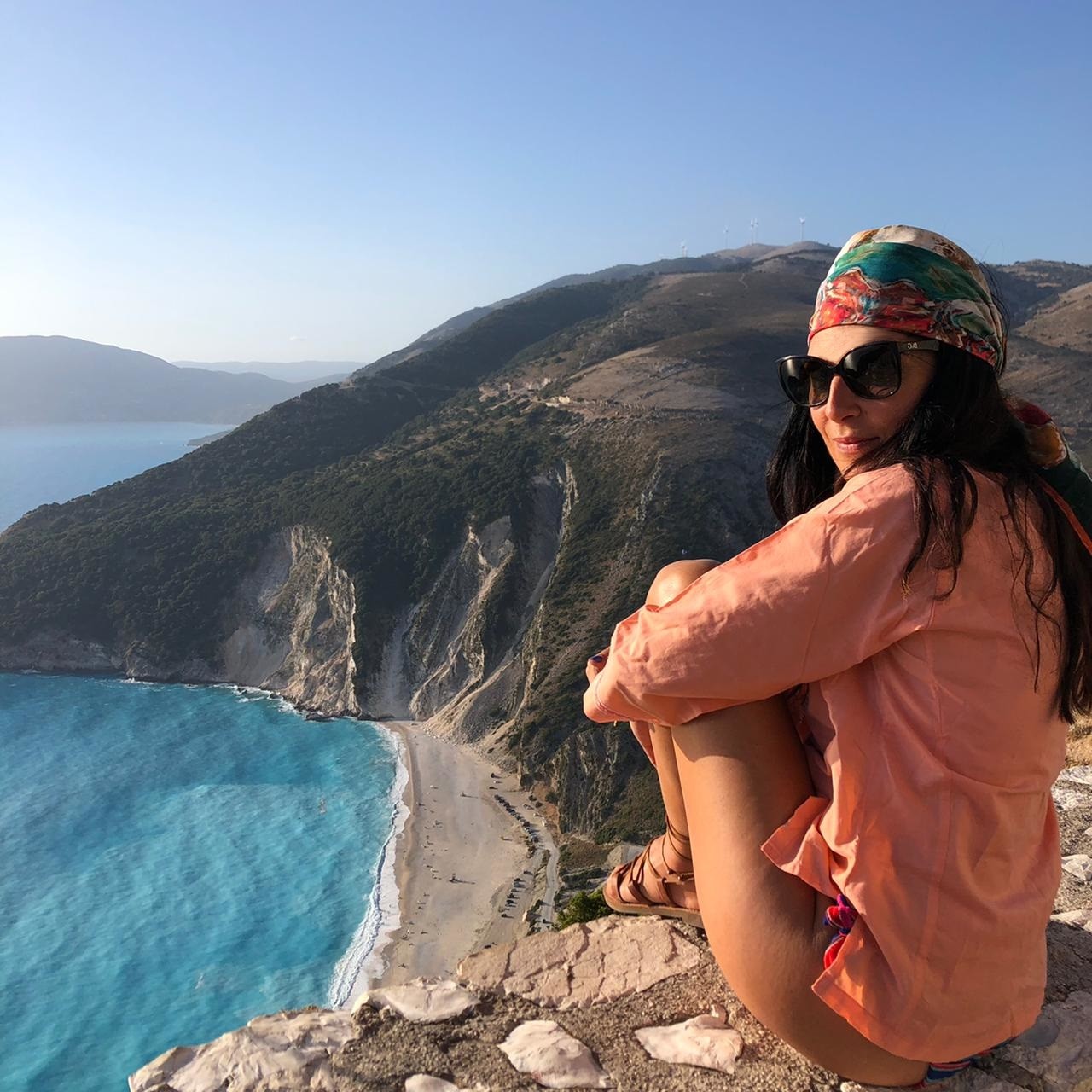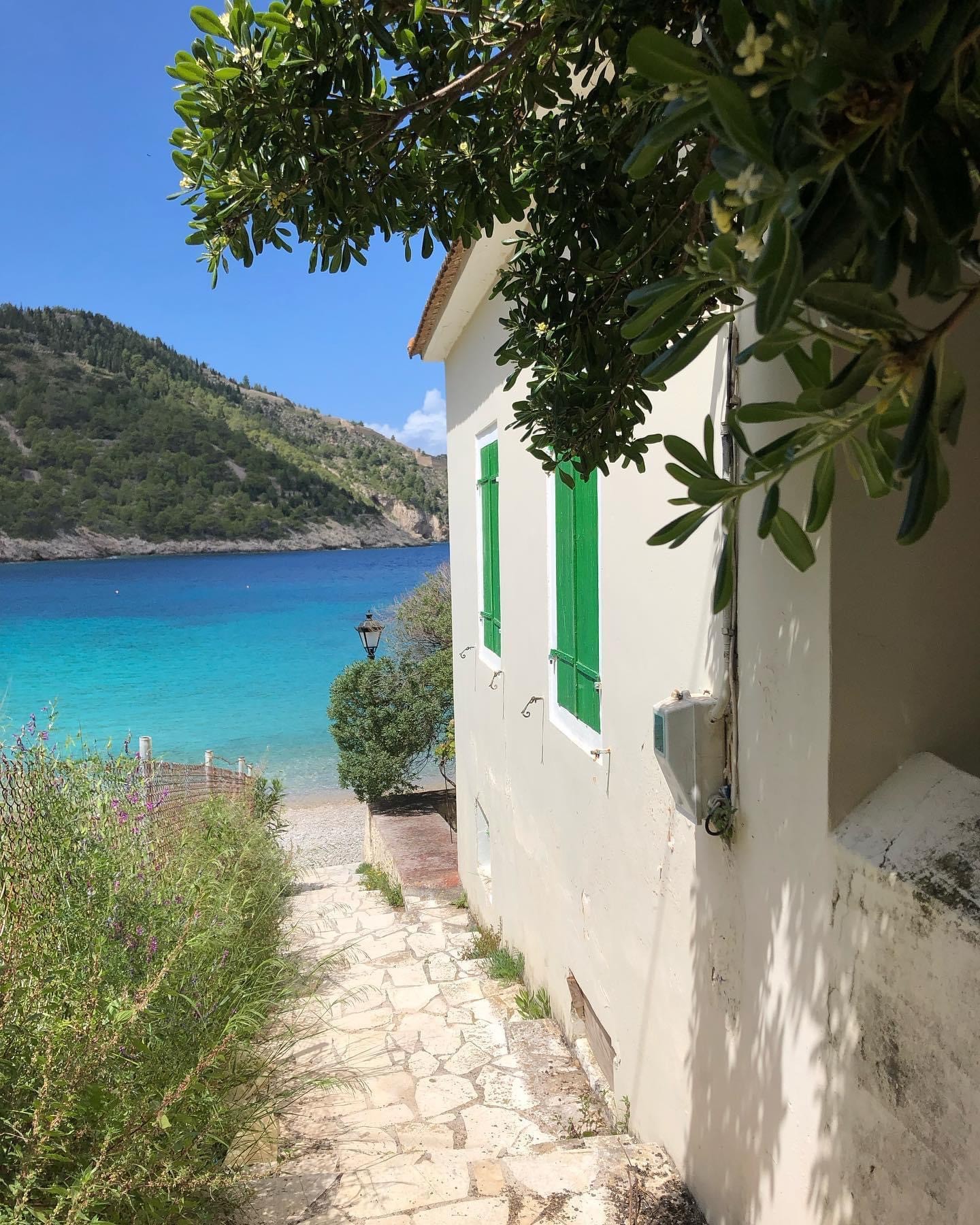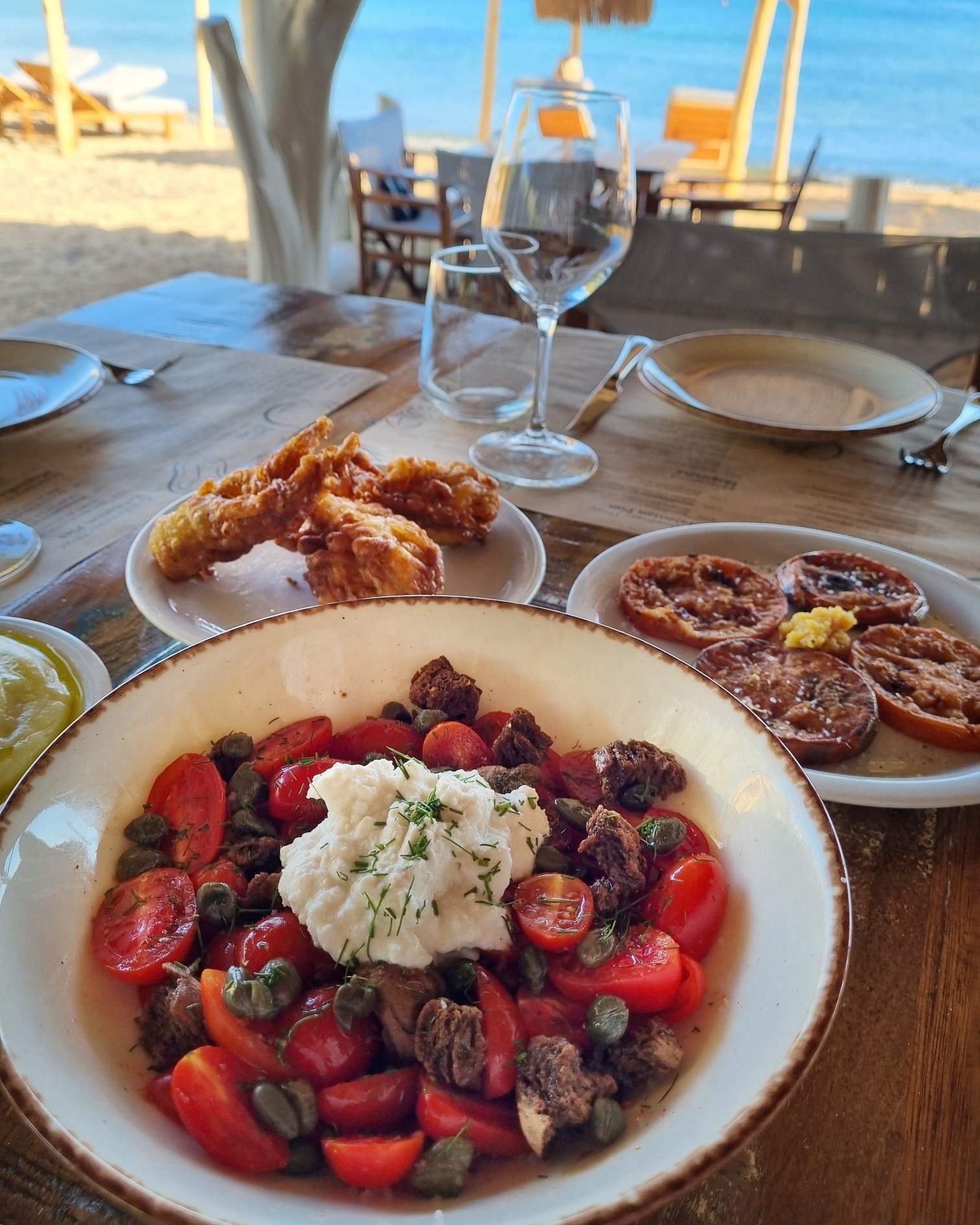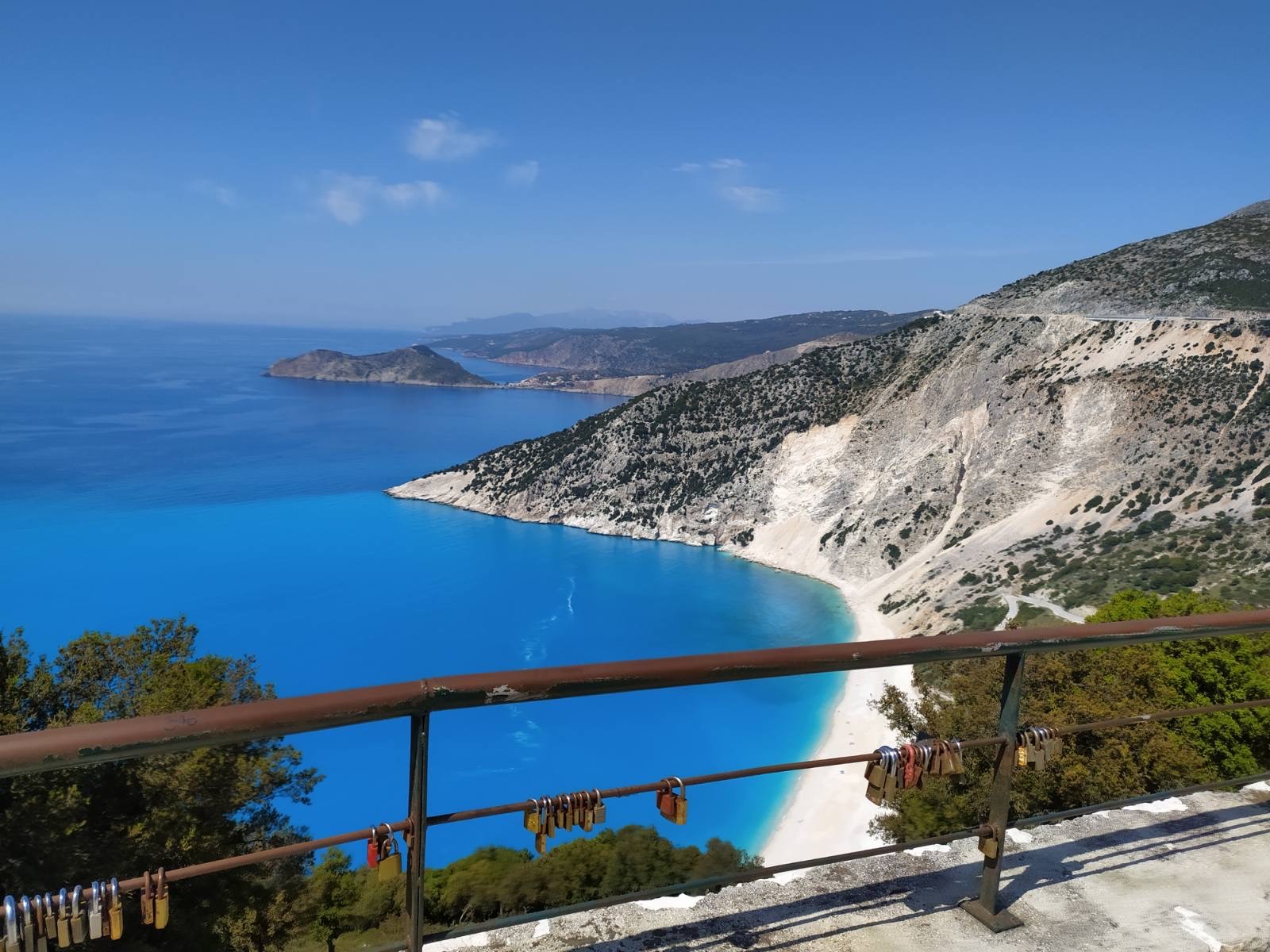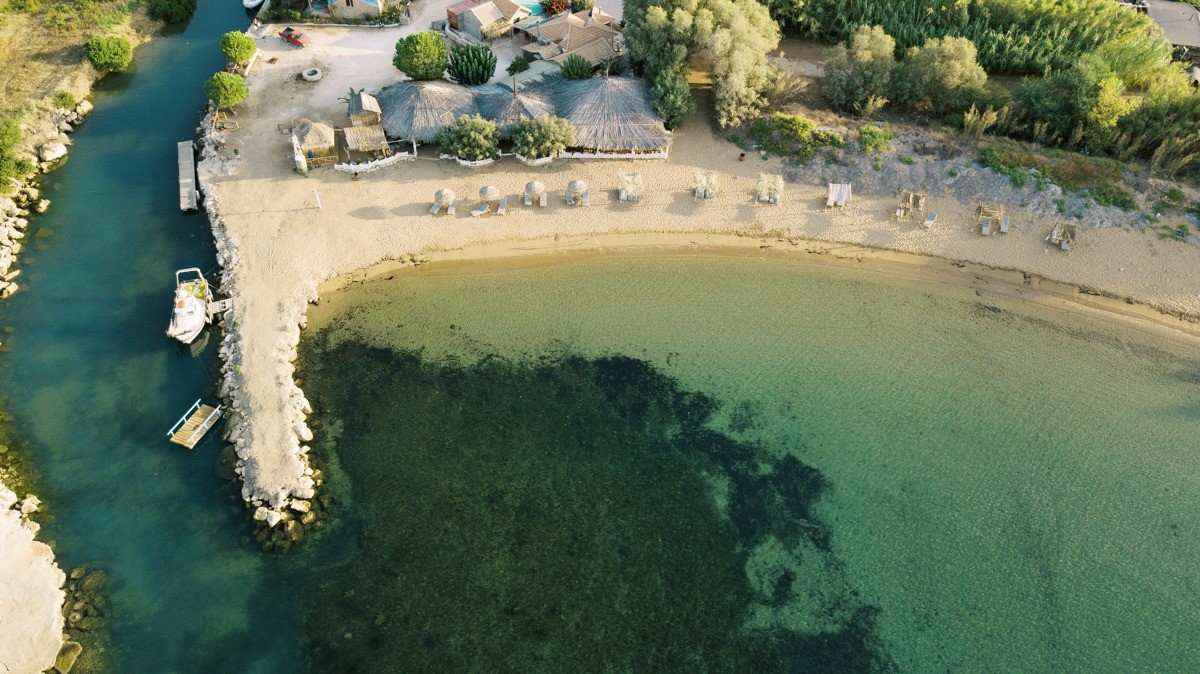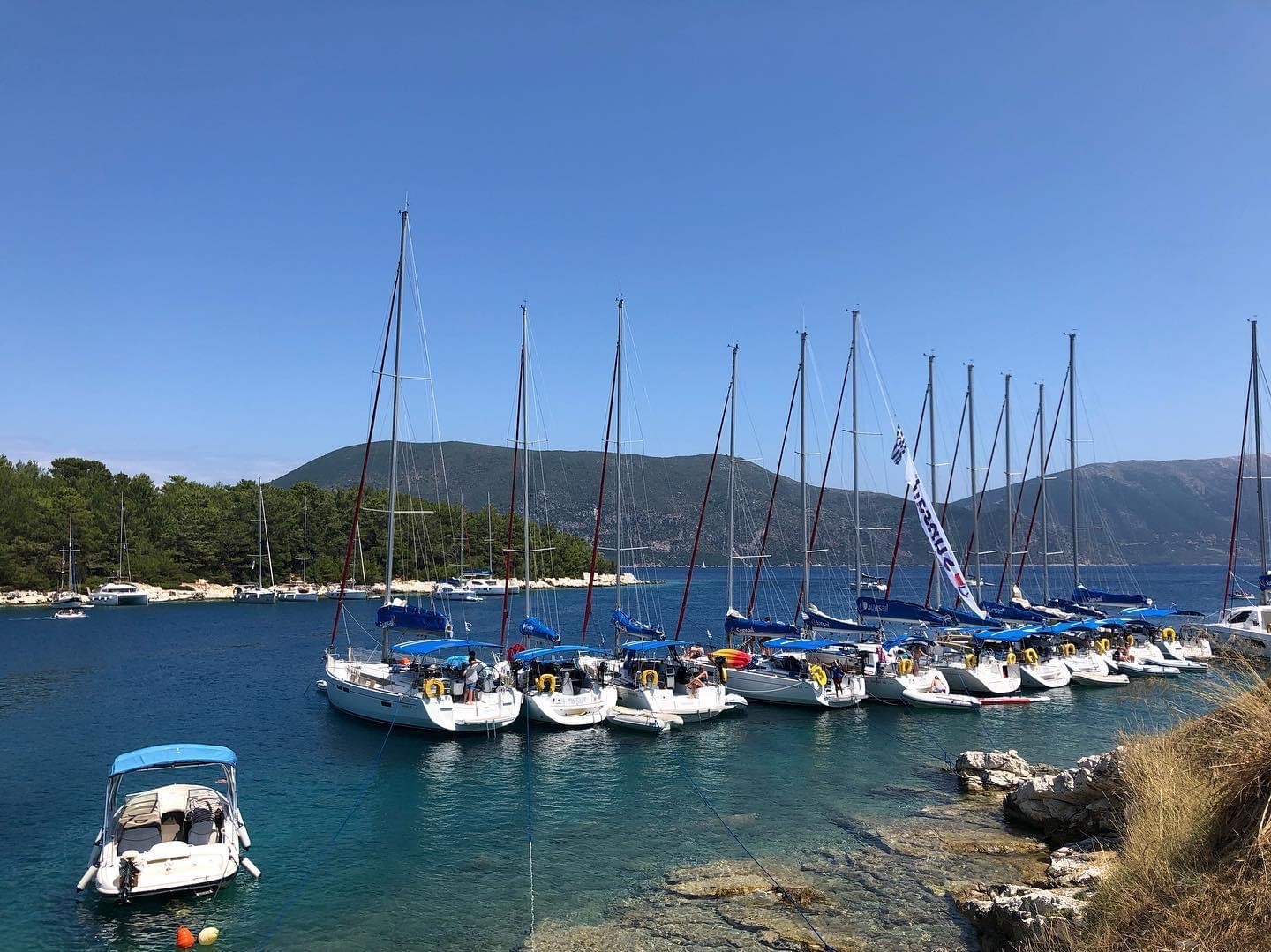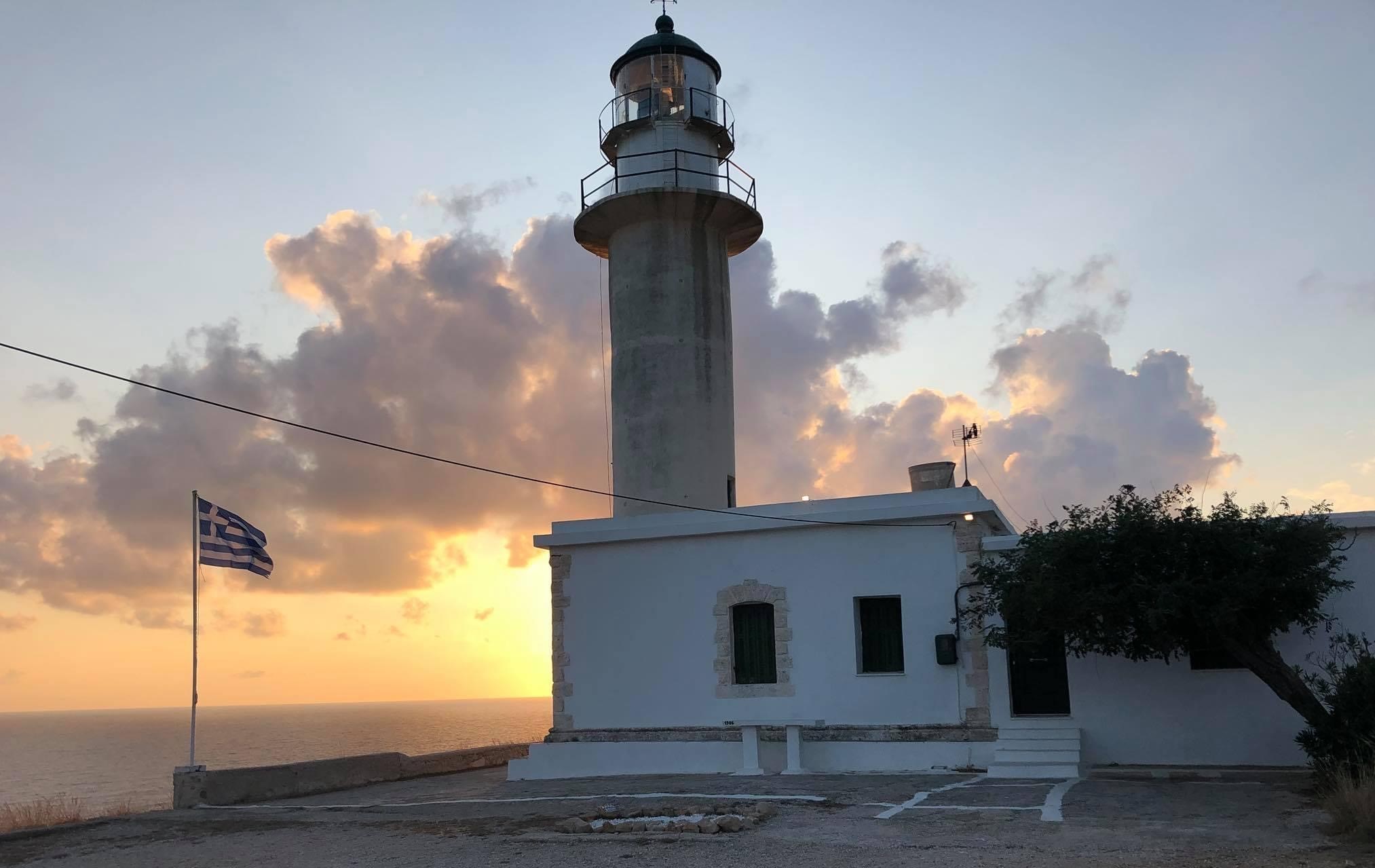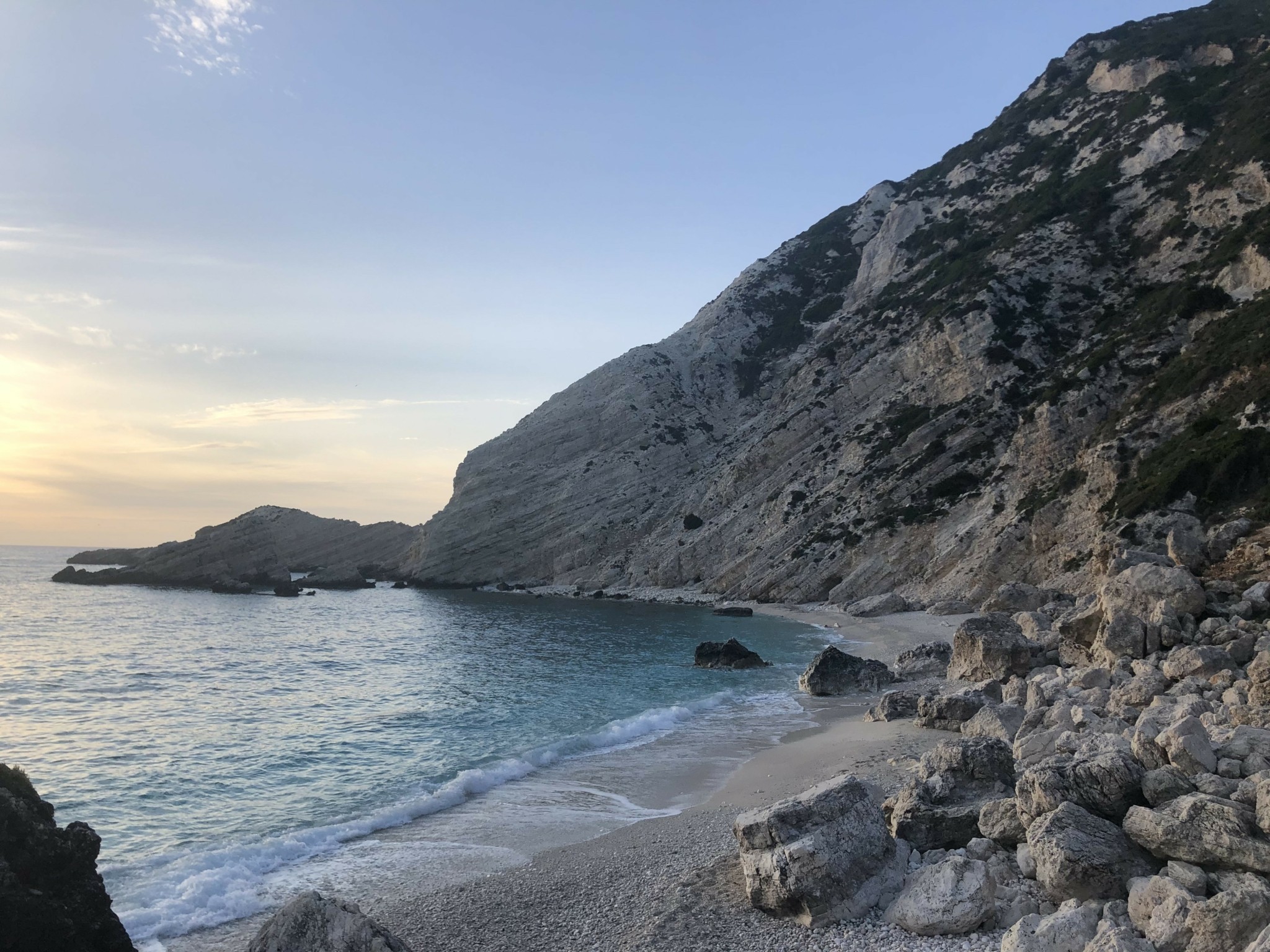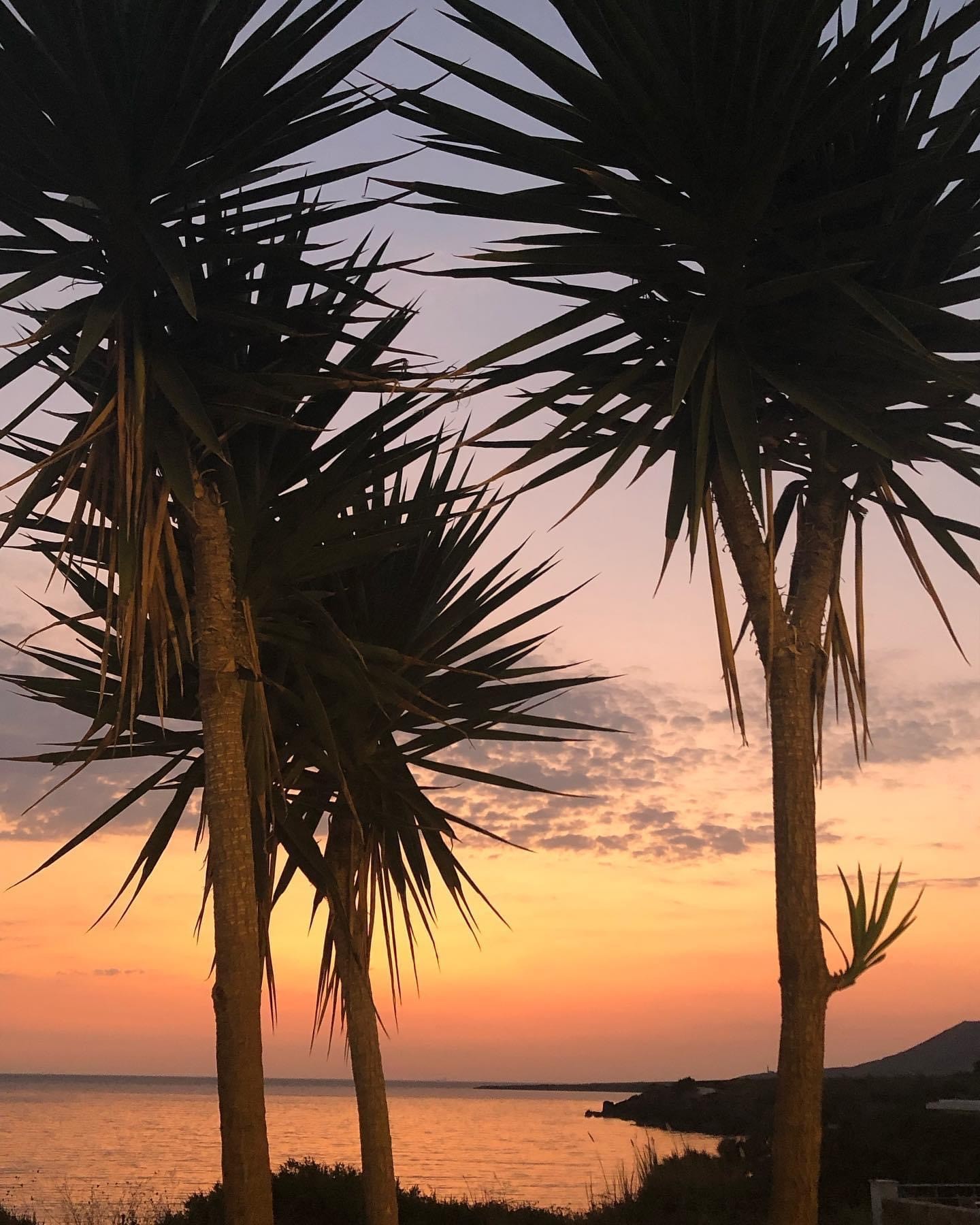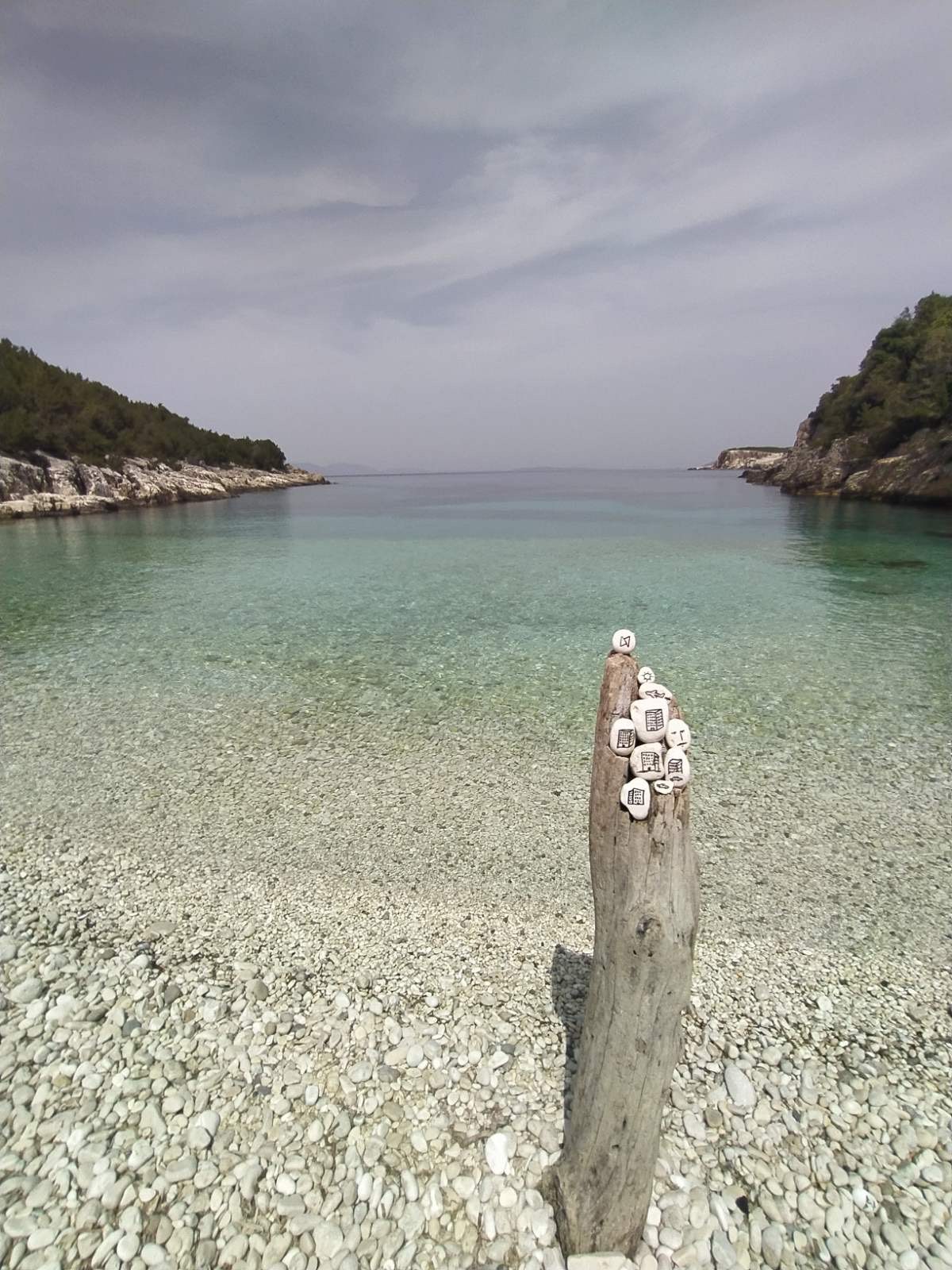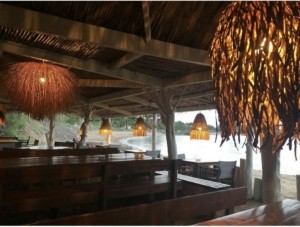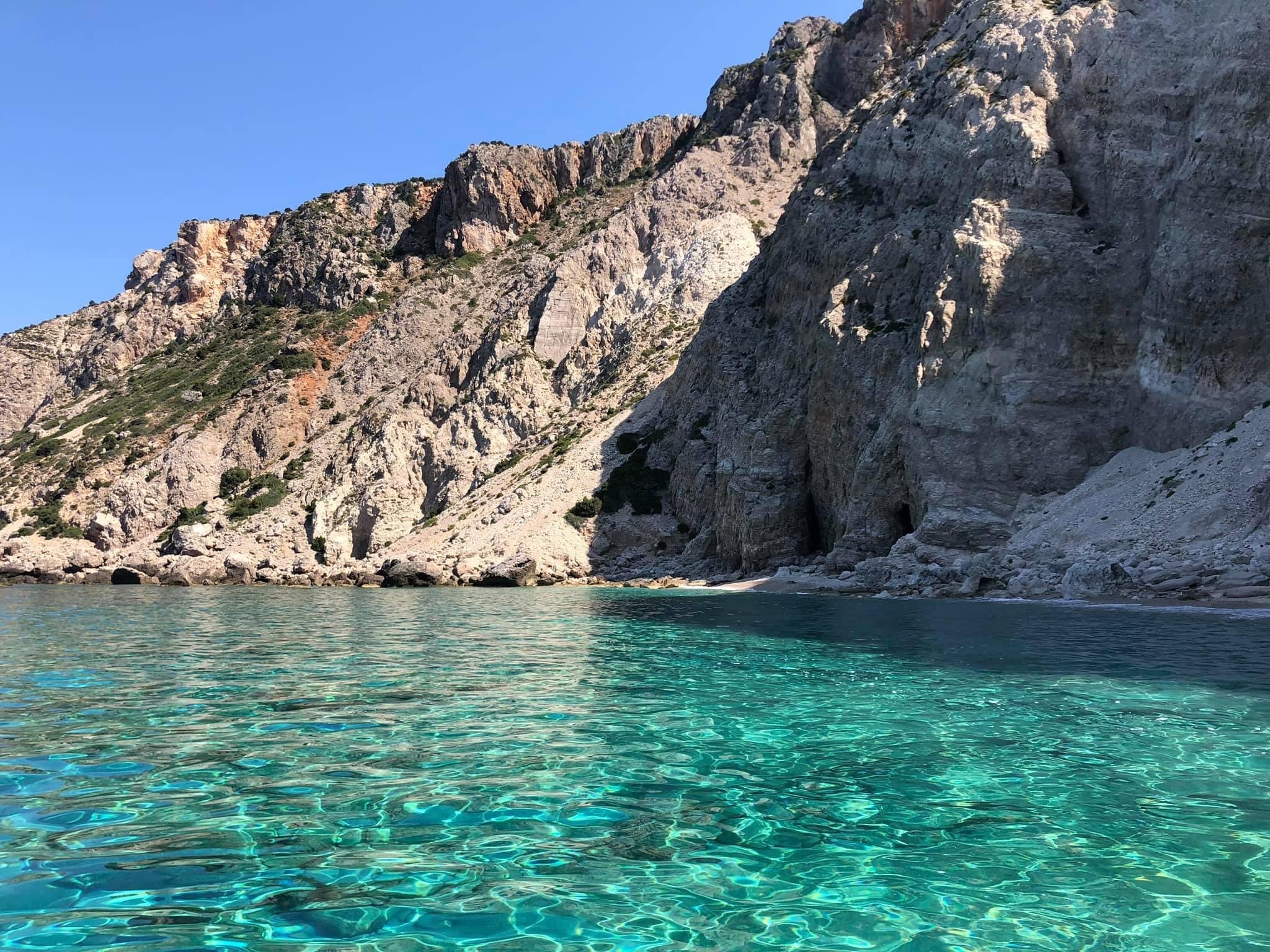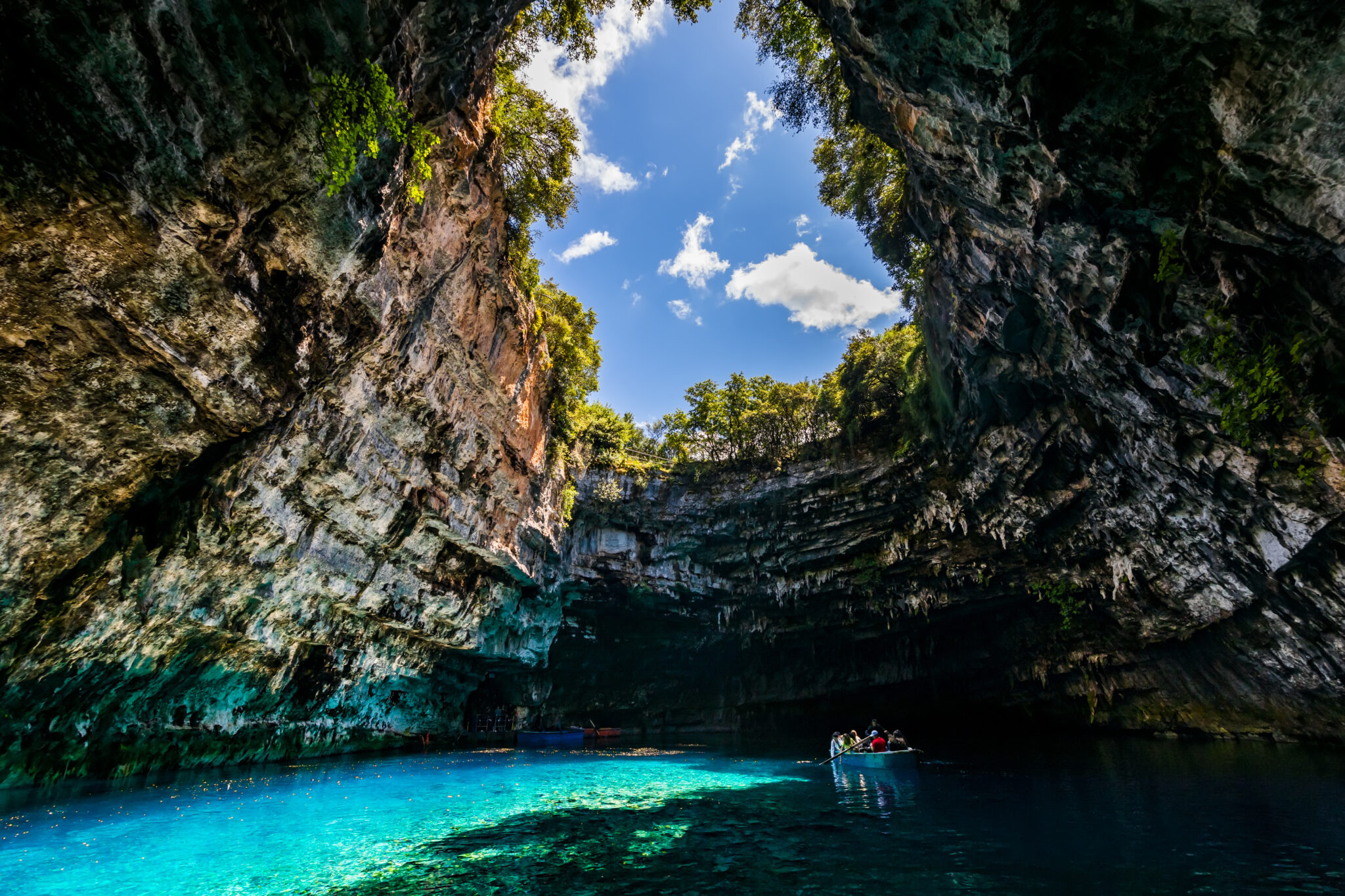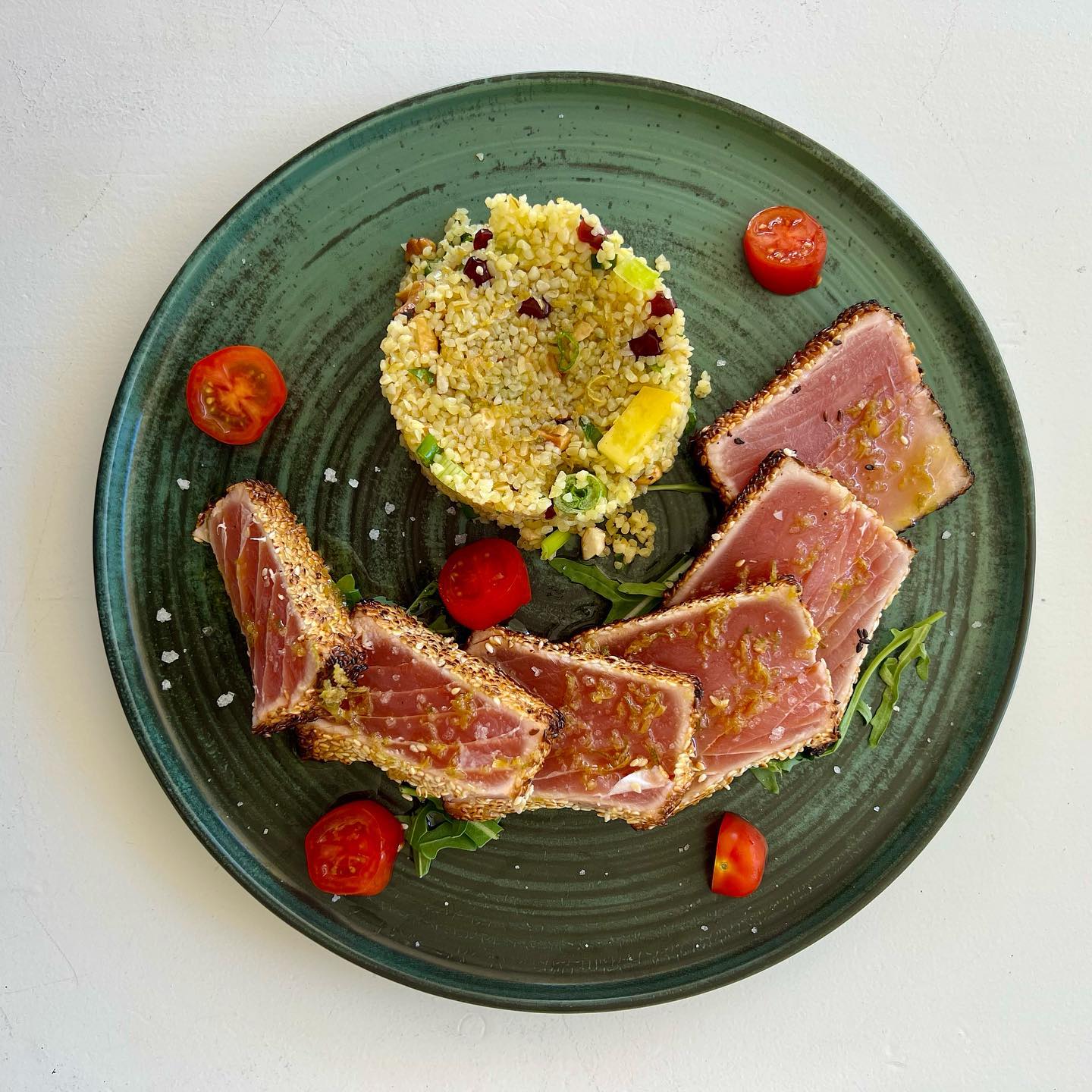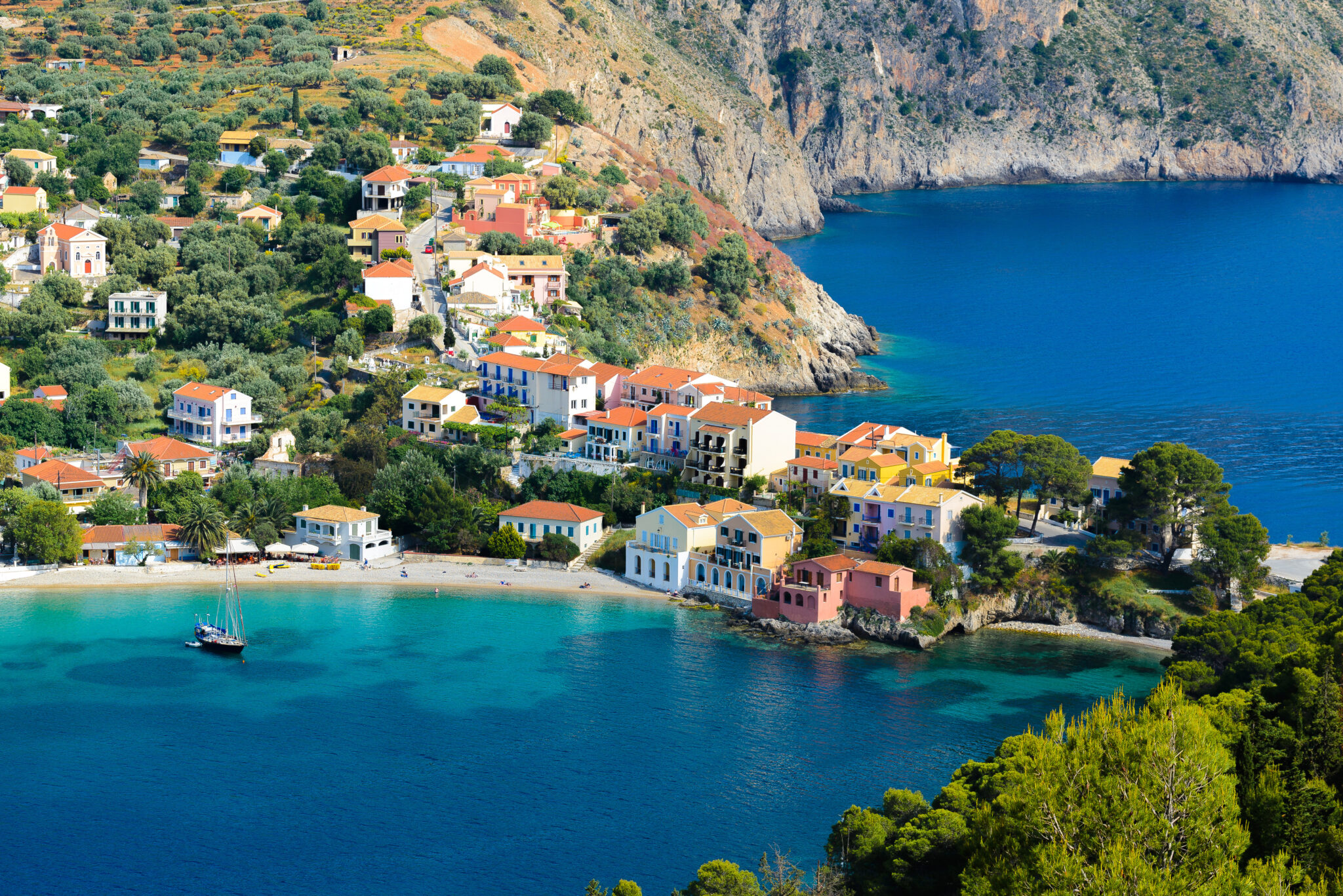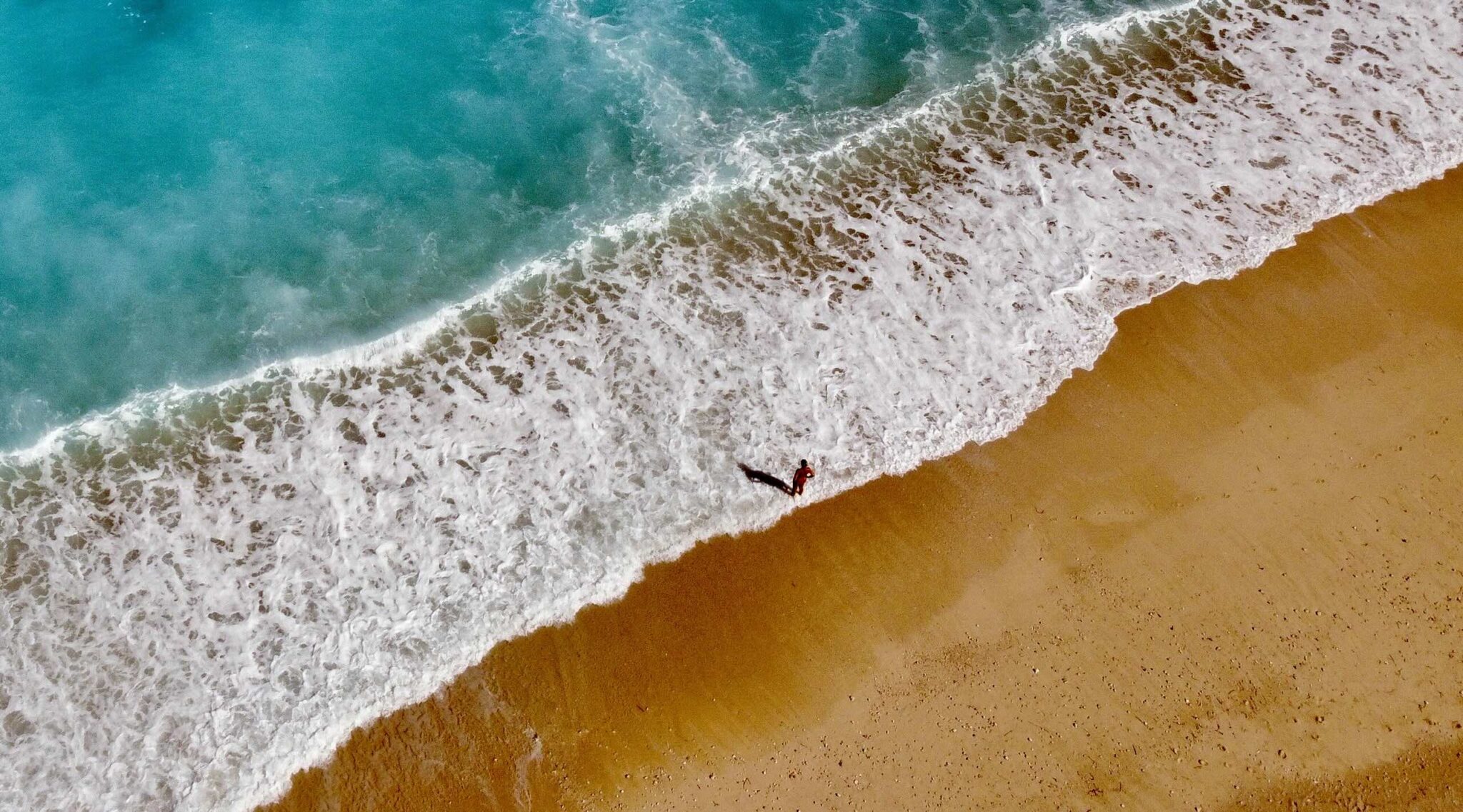The communication director of Calin Group takes us on a tour of her island.
My childhood summers in Kefalonia where a three-month celebration. We soaked in the sea for hours and our daily goal was to collect the most and best seashells. At the end of the day, all the children spending the summer at Kounopetra gathered in one place to take part in the seashell competition. We had other original competitions too, like the one for the best handstand, and the longest dive, that took place in Koutalas and Mania. We went to the Varkes bay with fish nets and picked shrimp, or, on some unforgettable nights, we went to the area’s rocky beach with forks and lanterns to catch crabs. Or harvest fleur de sel from the salt flats. Even today I still go on this walk-ritual, every year at the end of May, to harvest the year’s salt. I like the idea of having some of the sea’s taste from my home with me in Athens, and it’s a gift my friends really appreciate.
Kefalonia has changed a lot through the years. It reminds me of a large summer house that has been bequeathed on many and very different heirs. Some have grandiose plans and the budget to go with them, to modernise their rooms, make a pool in the garden, put up design umbrellas on the beach. Others can’t even afford to repair the cracks from the latest earthquake or to pick up the fallen trees after the passing of the Cyclone Ianos. Some are passionate and organised and patient, and will tackle the building tasks themselves, they will take care of the vegetable garden and the vine, they will make nice wines, they’ll put in their love and labour to the land.
What remains unchanged on the island is the craziness of the locals and its authentic, unspoiled beauty that combines the mountain and the sea.
Of course, I do have some favourite beaches I’m partial to. The beach beneath my home, Manolis, is less than 100 steps from my door. I go up and down all day, from the moment I wake up till the moment the moon comes out at night. Vatsa is an absolutely exotic beach 15 minutes away from Lixouri and has the only navigable river on Kefalonia that ends up blending in the sea. Petani, again in Paliki, is a large white pebbled beach, around 1 kilometre long, with crystal waters ranging in colour from light cerulean and turquoise to deep blue. Its name comes from the Homeric word “epietani” which means an area with abundant waters throughout the year. It’s a bit like a micrography of Myrtos, the island’s most iconic beach that is always on my list for swimming, even if just for ceremonial reasons. Platia Ammos is not just a beach, it’s an idea; when you’re there you feel like a small dot, I feel exactly the same when I look at the milky way at night. Up until the 2014 earthquake you had to climb down 400 steps to enjoy it, but now they’ve been destroyed. You can visit it by boat, if you call Spyros, and he’ll also show you other beaches that aren’t accessible from the land, and as a bonus, he will tell you great stories in his own unique style, since he is one of the icons of the island.
Dafnoudi beach is great for the wooded path that leads to it that is frequented by wild goats – I remember once we had to climb to the very edge to let them pass as they’d made it clear that priority was to be given to them. Skala is the longest beach on the island, 5km long.
Also note a few more beaches: Fteri, Ammidi, Horgota – they look like paradise settings in movies. For me, a favourite beach, is one that I’ll go out of my way just to swim there, and Kefalonia has countless of the kind. I still discover beaches I haven’t been to, usually when I’m exploring, climbing rocks or swimming away from a beach and reaching beaches that are not accessible from the street.
Apart from the famous “Captain Corelli’s Mandolin”, filmed in 2001, two more films were shot on the island: the Italian “Troppa Grazia” (Lucia’s Grace), and a short film-dream “As you sleep the world empties” by director Vasilis Kekatos, who is from Kefalonia, which was filmed during the lockdown.
My favourite walk on the island is the coast to coast walk from my house at Kounopetra to Vrachinari, at sunset. In the distance you can see the Gerogompos Lighthouse flickering, it’s light moving from a rocky coast to a sandy Vrachinari. There, on the beach there is a canteen that seems to have been forgotten by time, and I mean it in the best of ways.
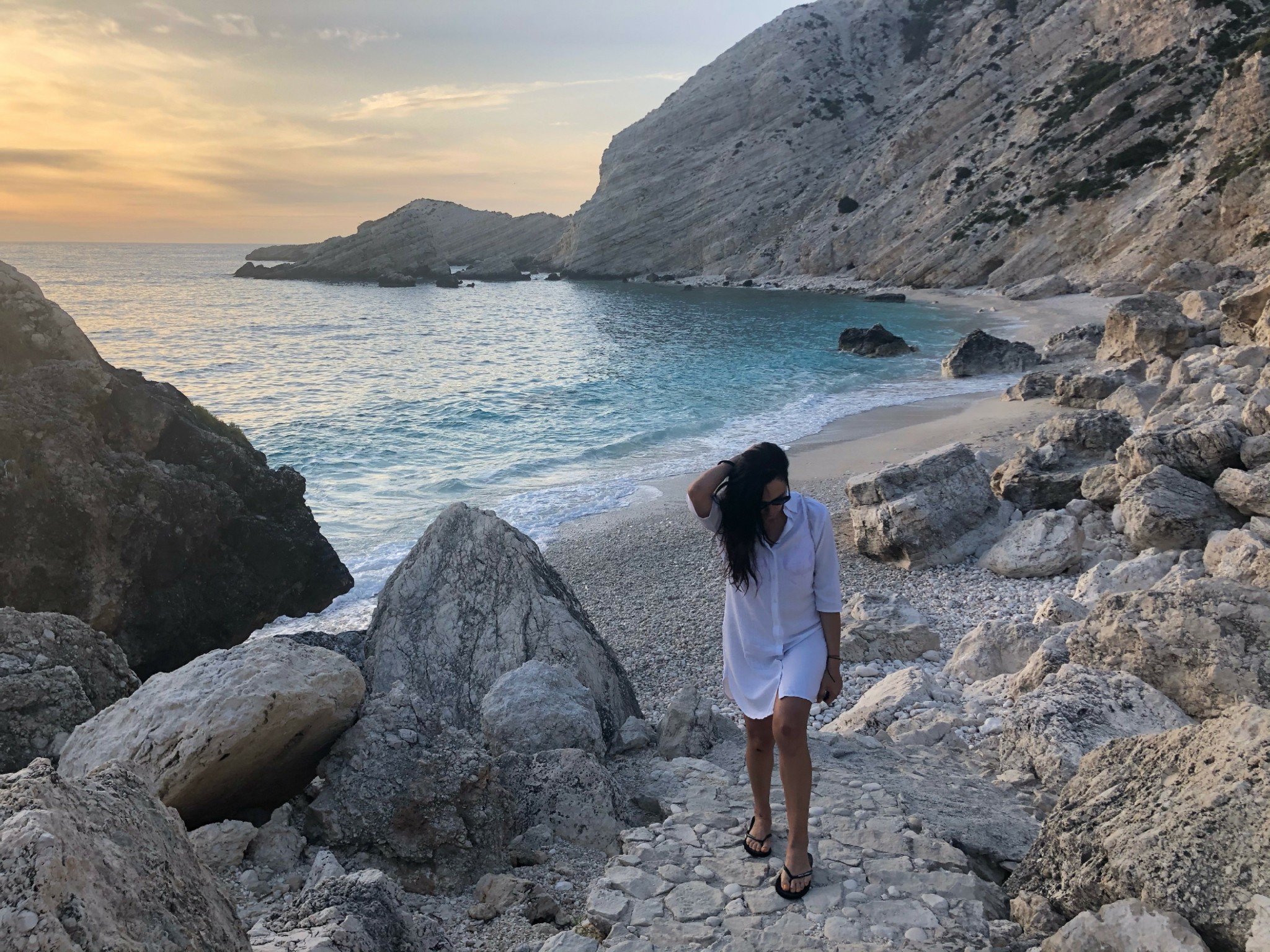
“What remains unchanged on the island is the craziness of the locals and its authentic, unspoiled beauty”
Tzina Konstantopoulou
The never-ending rivalry between Argostoli and Lixouri
Due to this eternal rivalry between the two, that started in 1700 about which one should be the capital, and to the fact that I am form Lixouri makes my view of Argostoli totally subjective. Argostoli is very beautiful and there you can find everything you’re used to enjoying in Athens. From the night life to the food options and the shops. The beaches off the ring road, picture perfect, are one next to the other. What’s great is that these two cities are “connected” in the summer every half hour by the cult slides (that’s what we call the small ferry boats) that take 20 minutes to cover the distance. In my opinion, the best view of the two cities is from the deck of one of these slides.
Lixouri, on the other hand, the second largest city on the island, the birthland of the serenade, seems stuck in time, both in a good and in a bad way. The central square with the huge Ficus is the meeting point and the dozens of children there climb it all the time.
Assos, on the Northeast of the island is probably one of the most beautiful villages of the Ionian sea, built during the Venetian rule, at the end of the 16th century and rebuilt after the disastrous earthquakes of 1953. The colourful houses of Assos paint the bay and the pebbled, miniature beach that’s almost underneath the balconies of the houses, right outside their yards. Over Assos you’ll see the majestic Kastro with a breath-taking history and view.
Picturesque Fiskardo, the Positano of Kefalonia, used to be a fishing village but now is a cosmopolitan destination for yacht owners and travellers who want a taste of the lifestyle of yacht owners.
Local specialties, favourite dishes, and fried tomatoes
First and foremost: the pies. Octopus pie, cod pie and of course, meat pie. Rabbit stew. We grew up eating riganada (a traditional dish from Kefalonia made of dry bread drizzled with olive oil, vinegar, and a lot of oregano to which grated tomato and cheese are added), which you’ll have to try at the tavern Vasta Spiaggia – a great culinary chapter on its own. Evropi, the owner, will tell you more about it (the secret lies in stoumpa -myzithra crumbles in the local dialect- but that’s all I’ll say). Chef Giorgos Kaoukis, in the kitchen, performs little miracles with fresh vegetables from their vegetable garden and seafood from their fisherman. This tavern has a special place in my heart because I’ve known it since its first year, when it looked like a canteen and you could eat the most delicious meatballs with fries, at its handful of tables on the sand. There are so many things you should try there, but don’t leave without ordering petalohortaro (a type of seaweed) and fried tomatoes. You’ll regret it. Go to Captain-Nikolas for the best fish soup, that feels like its homemade. Before I even order there, the moment I enter, I ask if there’s chocolate pie and I ask for them to save me a piece. It’s prepared by them daily and is amazing. In Agia Kiriaki at the Kaliva tou Psara Tavern you’ll go for exactly what you think of when you think of fresh fish. At Odisseas Tavern, on the beach of Agia Jerusalem, you can taste an almost forgotten Kefalonian dish, rice with hartwort. Go to Opsarion Fishbar in Argostoli for a different delivery or take away that includes baby courgettes and octopus tarama with grape hyacinths, among the many tempting choices. The meat pie at Ladokola stin Plagia is one of a kind, so is the kindness and the natural sense of humour of the twins who own the place. For shrimp pasta go to Erasmia in Petani and for meatballs at Lepeda.
I often go to:
- In Agia Kiriaki at the Kaliva tou Psara Tavern exactly for what one would expect from the place.
- To Odisseas Tavern, on the beach of Agia Jerusalem, you can taste an almost forgotten Kefalonian dish, rice with hartwort.
- To Kiani Akti, a restaurant built on a wooden deck on the sea in Argostoli.
- And for a different delivery or take away with baby courgettes and octopus tarama with grape hyacinths, among the many tempting choices, to Opsarion Fishbar in Argostoli.
Kefalonia is famous for the Robola, a unique variety of white wine and for the mandoles, the red sugar covered almonds that were originally used as wedding treats and now have turned into a popular snack and a present we bring friends when we come back from the island, along with the almond cake from Mavroidis.
Local dialect and country of origin of the tourists
The local dialect includes many ancient Greek words with some of them being traced back to Homer’s time. Also, since Kefalonia was under Venetian rule for three centuries, many local words are heavily influenced by Italian. I also love the singsong way the local dialect is spoken. I remember each September, when I came back to Athens, my schoolmates telling me my speech had picked up traces of it.
The tourists that come to Kefalonia are mostly Italians and British. But you’ll also see Russians, Germans, and Dutch…
The island’s nightlife is quite adventurous. There’s a wide variety of places with music ranging from serenades to heavy popular Greek songs, and from jazzy beach bars to discos playing modern hits.
Where’s the best view?
Without doubt the best view is from Ainos. It’s the highest mountain of the Ionian islands with the highest peak, Megas Soros, reaching 1628 metres. The view from there is a panoramic magical picture that includes Kefalonia and the surrounding islands. Everyone goes for the view but the way there through the mountain is also a unique experience, the Venetians called it Monte Nero, that is black mountain, due to its black fir trees. It is the only fir forest on a Greek island, and this is one of the main reasons it was declared a national park in 1961. You can reach its borders by car and then follow one of the mountain’s trails. It is part of the Natura 2000 network, and among the 400 plant species you can see the unique Viola Cephalonica, a small purple flower that grows in the cracks on rocks, mainly at the Chionistra location in Ainos. If you’re lucky you’ll come across one of the bands of small feral horses that live free in the area surrounding the Monastery of Zoodochos Pigi, on the Southeast of the mountain.
Especially in the summer the colours of the sunset also form part of the view. I’m not one to chase after the perfect sunset, I think that wherever one is and can look at the sun, that alone is perfect. But I do have three personal favourite sunset spots:
- Gerogompos Lighthouse
- The balcony of the Monastery of Kipoureon
- Damoulianata, the westernmost village of Kefalonia, overlooking the Ionian sea. At an altitude of 373m, I call the sunset there a bit spooky because even on the day with the best summer weather there will be those clouds that resemble fog over the slopes.
Myths and stories that pass on by word of mouth
The island took its name from the mythical Kefalos who arrived there as an immigrant from Athens. From there on, I don’t know what else to mention as the stories and the myths are so many. I’ll mention the one that claims that Kefalonia, and more specifically the Paliki peninsula, is in reality Odysseus’ Ithaca. There is also the sad story of Kira-Anna who was lost at sea trying to save her child from the waves. The small beach on the right of Petani has taken her name. Influenced by that, each time I go for a swim there I feel absolved from all the things I’ve regretted. What’s best is for each visitor to live their own myth in Kefalonia and gather their own information from speaking with the locals.



